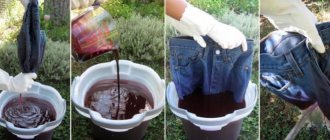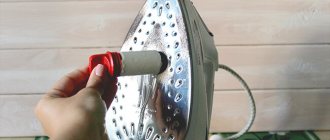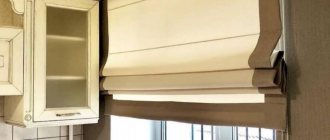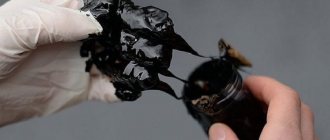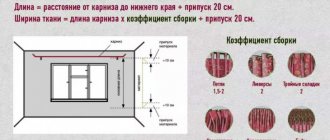When cleaning the house, every housewife removes the curtains for washing. Clean, washed tulle always looks wrinkled and requires ironing. Curtains can be ironed not only on an ironing board, but also without removing them from the curtain rod. This is very easy to do, and a few practical tips will help you cope with the task.
There are several ways to iron curtains. When using this or that method, you must definitely pay attention to the composition of the fabric from which the product is made. If it is silk, satin and other delicate fabric, then the temperature during ironing should not exceed 100 degrees. At higher temperatures, iron marks or difficult-to-remove stains will remain on the fabric surface.
How to iron curtains
The washed curtains are hung on the curtain rod and allowed to straighten for 1-2 hours. Then water is poured into the iron and the device is plugged into the outlet. Curtains are steamed using a jet of steam released from the sole of the iron. Particular attention is paid to places where there are creases or irregularities. The iron should be kept at a distance of 30-40 centimeters from the fabric, not close. Thin fabrics are smoothed out literally in seconds under the influence of steam; thicker fabrics need to be ironed much longer.
Important!
When ironing, wear mittens or an oven mitt on your hands to avoid scalding your hands.
Tips and prohibitions
In order not to injure yourself and not to spoil the light fabric during the ironing process, housewives offer several useful tips:
when working with a heated kettle or steamer, you must follow basic safety rules, do not be distracted, do not allow children into the process or closely monitor their activities;- when steaming and working with a hot hair iron, it is advisable not to stop in one place to straighten a complex fold, otherwise the fabric may melt;
- when working with steam, it may be necessary to re-treat especially wrinkled areas (in order to re-treat them, you need to let them dry first);
- You should not start the ironing process from the center of the product; if something goes wrong, the defect will be less noticeable from the edge.
Without iron
Many housewives have long abandoned the iron, replacing it with a modern household appliance - a steamer. The device is very convenient and easy to use; it copes with its task instantly, straightening out even the oldest creases in the fabric. For ironing curtains while hanging, a steamer will come in handy.
Pour water into the container and turn on the heat. You need to wait 2-3 minutes for the water to heat up and steam to start releasing. Pass the steam over the fabric several times with slow movements. In 10 minutes you can straighten even a large, 5-meter tulle without any difficulty. The steamer is suitable even for cotton and synthetic fabrics; after ironing, the curtains will be perfectly straight.
Steam ironing
Steam is a great way out of the situation. You can proceed as follows:
- if sufficiently hot water flows from the tap, then you can run a bath, place neatly hung clothes that need ironing above it on a bar or clothes dryer, draw the curtains or close the shower door and leave for about 20 minutes. This method is convenient for relatively large things other than clothes, this way you can smooth out curtains or tulle from which the curtains are made. For small items it is very convenient to use a floor drying rack because... when installed on a bathtub, it makes it possible to hang clothes (for example, a shirt) directly above the steam source;
- To smooth out small wrinkles, you can use a kettle by simply stretching the wrinkled area over the spout of a boiling appliance.
Without steamer
If you don’t have a steamer or iron at home, or, for example, there’s a power outage, you can straighten the curtains using steam. You need to get steam by simply boiling water. For this method you will need a kettle (gas or electric) or a small saucepan filled with water. Bring the water to a boil and continue boiling for another 5 minutes. Then take a container of boiling water and bring it to the hanging curtain. Direct the steam so that it hits the fabric. Use your hands to straighten the fabric and remove creases. The material smooths out before our eyes and has a neat appearance. For better results, you can slightly wet the curtains with a clean damp cloth; they will smooth out much better and faster.
Types of curtain steamers
These devices are divided not by functionality, but by method of use, since all curtain steamers serve the same purpose, but in different ways and have different characteristics.
Kinds:
- Manual - in accordance with the name, the device must be constantly suspended. As a rule, they do not have a large tank volume and high power, however, these models are considered the most popular among travelers, as they represent the best ratio of compactness and quality. They are not popular for use at home due to the short period of operation and the need to keep the structure suspended, but they are the most budget-friendly than other types.
- Floor-standing is the most bulky, but also the most durable among the types, which can be used for steaming both curtains and clothes. Best suited for home use as it is designed for long-term steaming. It is a vertical structure with a long hose ending in a tip through which steam is supplied.
- Ceiling - some users, seeing the name of this type, ask the question “What is this?” This type is not as common as others due to the fastening features that only dry cleaners can afford.
How to iron curtains without removing them from the curtain rod quickly and easily
If the curtains are made of heavy material - cotton or organza, you can use this method to straighten them. After washing, the fabric should not be completely wrung out; wet tulle should be immediately hung on the curtain rod. The curtains straighten under their own weight and will remain absolutely straight after drying. It takes a lot of time to straighten - about 10-12 hours, but the result will please you. However, the method will not work for synthetic material and thin fabric.
Important!
When hanging wet fabric, be sure to place dry floor rags underneath or place a basin to drain the water.
How to wash curtains
Each type of fabric has its own washing characteristics. For example, polyester “feels great” in an automatic machine in normal mode at a temperature of 40 to 60 degrees. The same applies to nylon fabric, however, in its case the use of chemical bleaches is not recommended. But with organza and veil you should be more careful so as not to damage the product. The temperature should not exceed 30 degrees, and the mode should be set to delicate washing, or it should be done manually.
Tip : To add shine to curtains, add a tablespoon of vinegar to the drum of the washing machine.
However, there are a number of general rules for washing tulle curtains that will allow you to cope with the most difficult stains using the means at hand.
- Before washing, first simply shake off any dust from the curtains.
- The product should be pre-soaked for several hours in warm water with the addition of powder or salt (a tablespoon per 10-liter basin).
- When washing tulle by hand, do not rub it too hard; just slightly squeeze the material. But careful rinsing is required until the water becomes clear.
- When washing in a machine, place the product in a special bag or pillowcase. Set the temperature to 40 degrees.
- Do not pour a lot of washing powder so that the product is rinsed well and there are no streaks left on it. When hand washing, rinse first in warm water and finally in cool water.
White curtains are especially susceptible to contamination - dust or greasy stains are more visible on them if the curtains are hanging in the kitchen. Since digestion (boiling) is contraindicated for these fabrics, we suggest you consider several “folk” methods with which you can restore tulle to its former whiteness at home.
Method No. 1
To remove yellow plaque, you will need ammonia and hydrogen peroxide in a ratio of 1:3 (the amount is indicated in the size of a tablespoon). Pour the components into hot water (approximate temperature 60 degrees), into which the tulle is placed for 30 minutes. Afterwards, the product is thoroughly rinsed, carefully wrung out of excess moisture and hung on a stretched rope.
Method No. 2
Moisten the fabric and gently soap it with a bar of laundry soap (can be replaced with gel detergent). Pour 250 grams of baking soda (about half a standard pack) into a bowl of water - this will prevent the formation of “flakes” from the drug, soak the tulle in it for about 3 hours. After time has passed, place it in the washing machine compartment and set the “hand wash” or “silk” / “wool” mode.
Method No. 3
A rather extraordinary method of returning curtains to their original whiteness, but the result exceeds all expectations.
- The first stage involves soaking the fabric for a long time in a strong saline solution, which actively absorbs dust particles and gives a slight shine. Afterwards, you need to thoroughly rinse and wash the tulle with laundry soap. To secure the result, put the product in the washing machine.
- The second stage is bleaching using brilliant green. To do this, dilute a couple of drops of brilliant green and three tablespoons of table salt in five liters of warm water. It is very important here not to disturb the proportions - the solution should be only slightly turquoise in color. Leave the curtains in the basin for a couple of minutes. Afterwards, rinse thoroughly and hang to dry.
Tip : when bleaching, instead of green, you can use blue - 0.5 teaspoon per 10 liters of water or 1 cap in the washing machine.
Method No. 4
Whitening will take at least a day, but the result will please you - even an old yellowed curtain will sparkle white again. So, soak the curtain for 24 hours in water to which a packet of boric acid (available at the pharmacy) and a few tablespoons of baking soda have been added. Periodically rinse the fabric in this mixture. After the time has passed, wash the product on a delicate cycle.
Important : it is better not to use purchased modern bleaches, even with an “innovative formula”. These products give excellent results the first time they are used, but later the fabric will either collapse or turn yellow.
Adviсe
In order for curtains to look neat and decorate the window, they need to be washed and ironed at least once a month. In addition to observing the temperature regime when ironing, you need to consider a few more points:
- To wash fabric, it is better to choose a delicate cycle with minimal spin or wash it by hand.
- If you don’t have time to iron the curtain after washing, then hang it along its entire length in the bathroom. You can turn on hot water - the steam will quickly remove the wrinkles.
- It is advisable to start ironing the curtains in the coming days. The longer the product sits in the closet, the more difficult it is to remove creases later.
- When ironing by hand, the curtain must be ironed on the wrong side and be sure to lay gauze on top - this will protect the fabric from burning. Ironing should start from the bottom to straighten the most difficult wrinkles. Then they raise the curtains to the middle and only then iron the top.
How to iron polyester curtains: briefly about the qualities of the fabric, whether it is worth ironing
Ironing curtains made of polyester, a material that perfectly complements the interior, must follow a certain algorithm. If you do not adhere to the described action plan, you can ruin the fabric of the curtains.
Polyester curtains are practical and look attractive
Polyester curtains are quite easy to care for, but there are two things this artificial material doesn't like - hot iron and hot water
To steam polyester curtains at home, follow these steps:
- prepare an ironing board;
- plug the iron into the outlet;
- select the most delicate ironing mode (for fabrics such as polyester, you need to set the temperature to 140 degrees, no more), wait for it to heat up sufficiently;
Set the iron to the “Silk” or silk mode - place the fabric on the board so that the upper left corner of the material is in front of you;
- Iron the fabric carefully, without pressure;
- move the curtain away from you;
- continue to perform the previous two steps from this algorithm until you reach the bottom edge of the curtain;
- if the curtain is wide, iron it in the same way, moving the fabric to the left.
Iron a curtain with a pattern from the wrong side
Additional Information! After washing, polyester curtains should be immediately hung on the curtain rod if there are no folds on their surface: this material can dry quickly without ironing.
Polyester dries quickly on its own, just hang the curtain on the curtain rod immediately after washing
Errors
Sometimes, due to inexperience or ignorance, people spoil expensive things. The most common reason is an incorrect choice of temperature conditions, as a result of which the delicate fabric base begins to shrink and holes form on its surface. If the material has deteriorated in an inconspicuous place, you can try to cut off the damaged piece of fabric. If the curtain is burned in the middle, then nothing can be done, the product can be thrown away.
The most common errors are also related to:
- With washing and drying in a machine at high speed. As a result, the curtain ends up with a large number of creases, which are difficult to fix.
- Untimely ironing. The product lies unnecessarily for several weeks after washing, so it is difficult to iron it out.
- Using an iron or steamer with a dirty surface. Soot on the sole immediately transfers to the fabric and, under the influence of temperature, eats tightly into its structure. It is difficult to remove carbon deposits from the curtain, so it is removed from the sole in advance. You can remove carbon deposits using a special cleaning pencil. It can be purchased at household goods stores.
You can iron even the thinnest tulle and curtains made of delicate fabric even without using an iron. You just need to know a couple of tricks and be able to apply them in practice, and you can safely hang the curtain on the windows, it will be beautiful and neat.
Ironing instructions after washing
To ensure that there are fewer creases on clean tulle, you need to wash the product correctly :
If the fabric is not too dirty, then choose the delicate mode.- The water temperature should not exceed 40 degrees.
- The spin mode is set to minimum speed.
- It is advisable not to use the drying mode.
- To make the material look smoother, it is recommended to add fabric softener to the machine.
If the tulle is cleaned manually, then add fabric softener during the last rinse.
Afterwards, the fabric is hung on a rope and excess water is allowed to drain. There is no need to unscrew it so that additional creases do not form. When the water has drained, hang the damp cloth and smooth it with your hands.
How to properly wash tulle by hand so that you don’t have to iron it later - in the video:
To tidy up large tulle items (curtains, tablecloths) that are difficult to iron on an ironing board, use the following ironing methods:
- In the fresh air . The material is dried outside, thrown in half over a rope. In this case, it is advisable to straighten all the folds and secure the position with clothespins. After a few hours, the product will level out, all that remains is to remove the creases where the clothespins were.
- Using a steamer .
A clothing steamer can iron straight and complex-cut garments with many layers within half an hour. A clean, slightly damp item is hung and steamed in a vertical position. It is recommended to direct steaming using downward movements (exclusively from top to bottom). You should not linger in one area for a long time, as this can damage the material.
Using steam in the bathroom .
Washed and dried items can be ironed over the bathtub. To do this, pour hot water into the container (at least 80 degrees). Tulle is pre-hung over the bathtub. The room is closed for half an hour, after which the wet product is hung up and allowed to dry naturally.- Cold water . Dry, clean tulle is laid out on a flat surface (sofa or bed). Fill the spray bottle with tap water. The material is sprayed over the entire area and rubbed over it with palms from the center to the edges. Allow to dry.
- Ladle or other vessel . In order to iron the tulle, it is laid out on an ironing board. Boiling water is poured into the ladle. Half the capacity is enough. With smooth movements, the hot metal utensil is moved over the fabric, smoothing out wrinkles.
The methods recommended on the Internet using a wet towel placed on crumpled tulle, as well as leveling the material under the mattress, are quite controversial. Many users rate them as ineffective.
